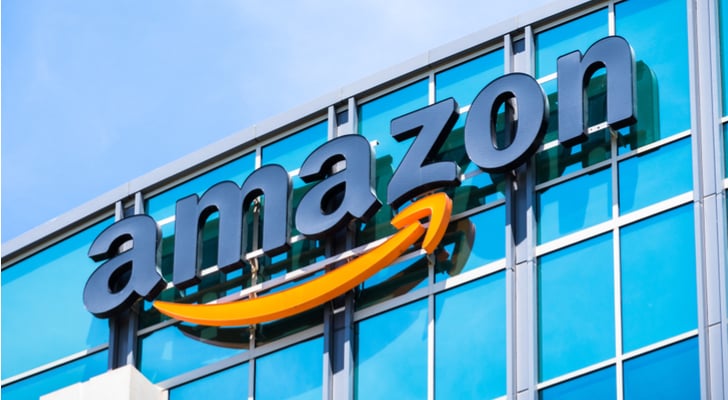If you’ve owned Amazon (NASDAQ:AMZN) for the past five years, 2018 was the fourth consecutive year of positive returns for Amazon stock, up 28.4%, well below its annual returns in 2015 (118%) and 2017 (56%), but well ahead of its 11% return in 2016.
On a scale of one to ten, 2018 would have to be rated by shareholders as a solid seven if not an eight.
However, if you’re an investor in the one of the many ETFs tracking the S&P 500 — a total return of -4.4% in 2018 — Amazon’s performance is nothing short of a home run.
Sure, Amazon stock was flying high in late summer, early fall, passing through a $2,000 share price on the way to a market cap of more than $1 trillion, but then the correction hit and it crashed back to earth, finishing 2018 with a market cap of less than $750 billion.
Amazon stock finished the year at $1,501.97, exactly halfway to $3,000, the next target on its way to $5,000.
Can it get there in 2019?
Sure, anything’s possible. However, it’s important to note that Amazon’s only doubled its share price on two occasions (2009 and 2015) over the past decade, so it’s highly unlikely.
Forsaking reality for a moment, Amazon’s got to do these three things to have half a chance of hitting $3,000 in 2019.
Employee Unity
This might seem like an odd thing to put on a list of activities a company must do to keep its stock moving higher but if Amazon doesn’t get its act together when it comes to all of its employees, not just the salaried ones, its business isn’t going to run nearly as efficiently and that’s definitely bad for Amazon stock.
“[Amazon] They overwork you and you’re like a number to them. During peak season and Prime season, they give you 60 hours a week. In July, I had Prime week and worked 60 hours,” an anonymous worker recently told the Guardian. “The same day I worked overtime, I got into a bad car accident because I was falling asleep behind the wheel.”
Coincidence or not, Amazon’s got a terrible reputation for the way it treats its employees. If it doesn’t fix these issues, it’s going to get burned.
Over the past five years, Starbucks (NASDAQ:SBUX) stock has delivered an annualized total return of 12%, not bad for a company whose revenues and earnings aren’t growing nearly as fast as Amazon’s.
Of course, Starbucks famously treats its employees, full-time and part-time, far better than the norm.
Fix this problem, Jeff. It’s not going away.
Amazon Go’s Got to Go Bigger
One of the best examples of technology invigorating consumers is Amazon Go, the no-checkout convenience store Amazon’s rolling out across America — the company’s expected to open 1,000 per year between 2019 and 2021 — an innovation that’s likely to bring traditional convenience stores to their knees if they don’t follow suit.
Recently, news reports suggested a person at Amazon with business development experience was assigned the task of figuring out how to make checkout-free stores work in airports.
Automated kiosks are already the norm at most airports; check-out free stores is a natural progression. It’s brilliant.
Even better, because the Amazon Go concept is technology-driven, it would be so easy to simply license the concept to operators of airport retail shops and hospitality venues.
No muss, no fuss.
Or, alternatively, it could set up mini Whole Foods stores that are check-out free. I know I’d use it.
People might not shop at Whole Foods normally, but when a captive consumer at an airport, my guess is they would.
This has got to be in operation or at least near opening by the end of 2019.
Free Cash Flow and Amazon Stock
In the trailing 12 months ended Sept. 30, 2018, Amazon generated $15.4 billion in free cash flow (FCF), 93% higher than a year earlier.
When AMZN stock was valued at $1 trillion in September, it was trading at 65 times FCF; today, it’s trading at 48 times FCF.
Were Amazon to increase its FCF by 90% a year for the next three years, it would have $106 billion in free cash flow. Were its market cap to remain the same over those three years it would be trading at seven times FCF, an unbelievable valuation.
Of course, we know that wouldn’t happen. If Amazon continues to grow FCF by almost triple digits for the next three years, you can bet at that point it would trade at historical highs.
The simple fact is this: if Amazon increases FCF by 90% in 2019, it would only have to trade at a multiple of 52 times FCF to reach $3,000.
However, if it doesn’t deliver big on the first two issues, I’m doubtful it can replicate its FCF generation of the past 12 months, slowing growth of Amazon stock.
As of this writing Will Ashworth did not hold a position in any of the aforementioned securities.

